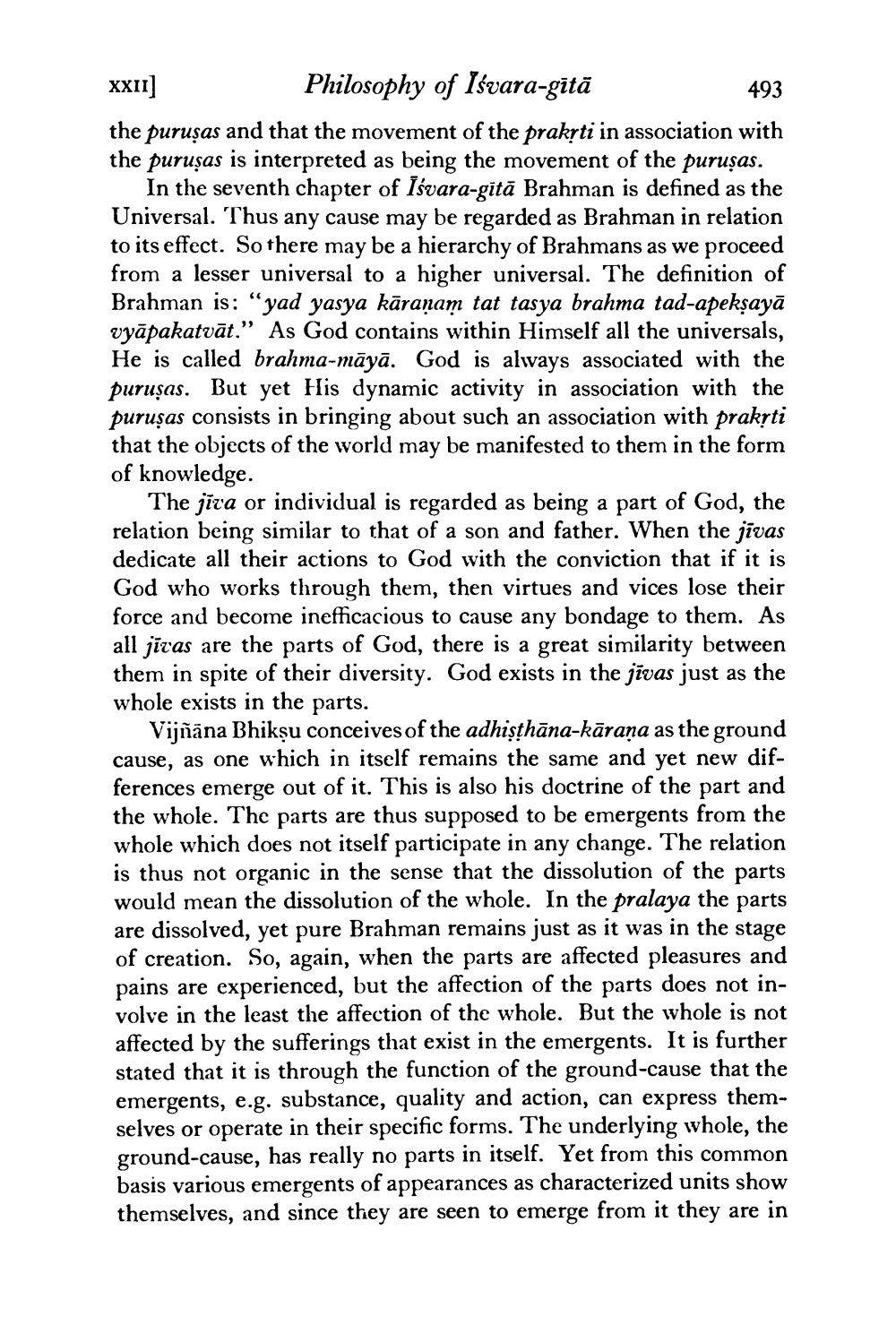________________
XXII] Philosophy of Isvara-gītā
493 the puruṣas and that the movement of the prakrti in association with the purușas is interpreted as being the movement of the puruṣas.
In the seventh chapter of Išvara-gitā Brahman is defined as the Universal. Thus any cause may be regarded as Brahman in relation to its effect. So there may be a hierarchy of Brahmans as we proceed from a lesser universal to a higher universal. The definition of Brahman is: "yad yasya kāraṇam tat tasya brahma tad-apekṣayā vyāpakatvāt.” As God contains within Himself all the universals, He is called brahma-māyā. God is always associated with the puruṣas. But yet His dynamic activity in association with the puruṣas consists in bringing about such an association with praksti that the objects of the world may be manifested to them in the form of knowledge.
The jīra or individual is regarded as being a part of God, the relation being similar to that of a son and father. When the jīvas dedicate all their actions to God with the conviction that if it is God who works through them, then virtues and vices lose their force and become inefficacious to cause any bondage to them. As all jīras are the parts of God, there is a great similarity between them in spite of their diversity. God exists in the jīvas just as the whole exists in the parts.
Vijñāna Bhikṣu conceives of the adhisthāna-kāraņa as the ground cause, as one which in itself remains the same and yet new differences emerge out of it. This is also his doctrine of the part and the whole. The parts are thus supposed to be emergents from the whole which does not itself participate in any change. The relation is thus not organic in the sense that the dissolution of the parts would mean the dissolution of the whole. In the pralaya the parts are dissolved, yet pure Brahman remains just as it was in the stage of creation. So, again, when the parts are affected pleasures and pains are experienced, but the affection of the parts does not involve in the least the affection of the whole. But the whole is not affected by the sufferings that exist in the emergents. It is further stated that it is through the function of the ground-cause that the emergents, e.g. substance, quality and action, can express themselves or operate in their specific forms. The underlying whole, the ground-cause, has really no parts in itself. Yet from this common basis various emergents of appearances as characterized units show themselves, and since they are seen to emerge from it they are in




